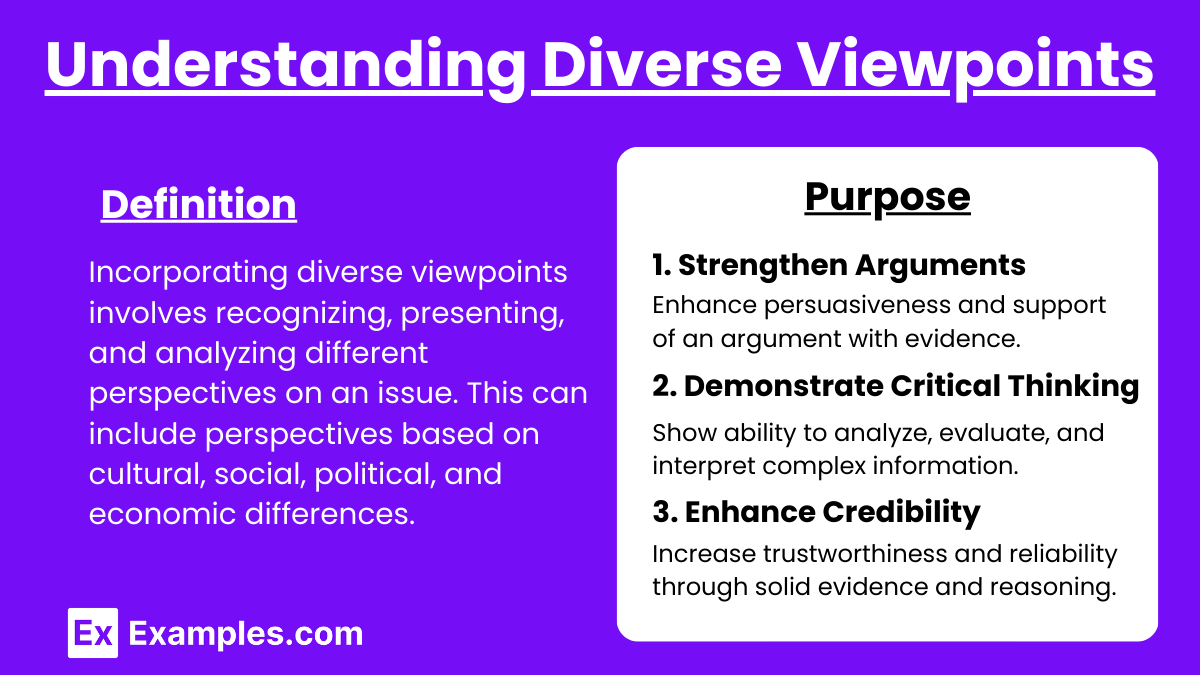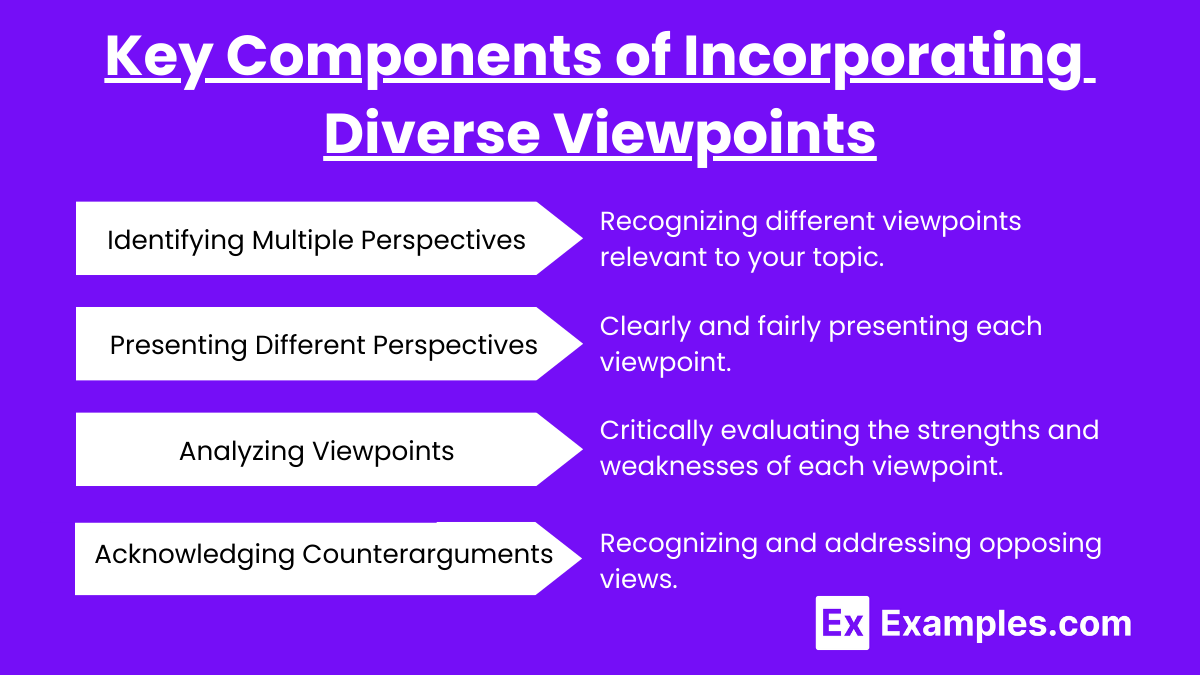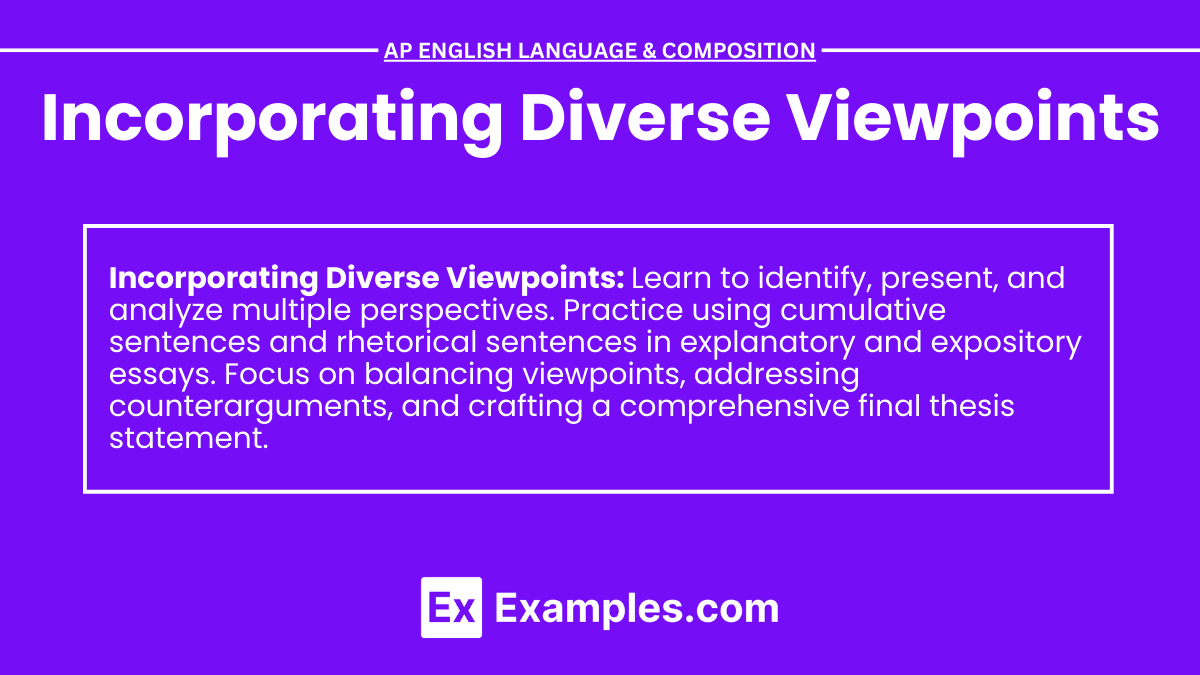In the AP English Language and Composition exam, effectively incorporating diverse viewpoints is vital for crafting well-rounded and persuasive essays. Whether you are engaging in argumentative writing or delivering an argumentative speech, recognizing and analyzing different perspectives strengthens your argument and demonstrates critical thinking. Utilizing rhetorical sentences and cumulative sentences allows you to present various angles of a topic compellingly, enhancing the depth and credibility of your argument. Mastering this skill ensures that your writing is balanced, nuanced, and resonates with a broad audience, ultimately improving the overall impact of your essays.
Free AP English Language and Composition Practice Test
Learning Objectives
By studying the topic of incorporating diverse viewpoints, students will achieve several key learning objectives. They will learn to enhance their critical thinking skills by recognizing and analyzing multiple perspectives in explanatory essays and expository essays. Students will develop the ability to craft cumulative sentences and rhetorical sentences that effectively present various viewpoints. They will understand how to balance different perspectives to create a nuanced and comprehensive final thesis statement. Mastery of these techniques will enable students to produce well-rounded, persuasive, and credible essays that resonate with a diverse audience.
Understanding Diverse Viewpoints

Definition
Incorporating diverse viewpoints involves recognizing, presenting, and analyzing different perspectives on an issue. This can include perspectives based on cultural, social, political, and economic differences.
Purpose
Strengthen Arguments: By considering multiple perspectives, your argument becomes more robust and well-supported.
Demonstrate Critical Thinking: Shows the ability to think deeply and consider various angles of a topic.
Enhance Credibility: Acknowledging counterarguments and different viewpoints makes your writing more credible and trustworthy.
Key Components of Incorporating Diverse Viewpoints

Identifying Multiple Perspectives
Definition: Recognizing different viewpoints relevant to your topic.
Techniques: Research thoroughly to understand the various angles from which an issue can be viewed.
Presenting Different Perspectives
Definition: Clearly and fairly presenting each viewpoint.
Techniques: Use quotes, data, and examples to accurately represent each perspective.
Analyzing Viewpoints
Definition: Critically evaluating the strengths and weaknesses of each viewpoint.
Techniques: Compare and contrast viewpoints, discuss implications, and use evidence to support your analysis.
Acknowledging Counterarguments
Definition: Recognizing and addressing opposing views.
Techniques: Present counterarguments fairly and refute them with strong evidence and reasoning.
Techniques for Incorporating Diverse Viewpoints
Use of Concessions and Refutations
Concessions: Acknowledge valid points in opposing viewpoints.
Example: "While it is true that renewable energy sources can be expensive initially..."
Refutations: Provide counterarguments to opposing viewpoints.
Example: "...the long-term environmental and economic benefits far outweigh the initial costs."
Balancing Viewpoints
Definition: Ensuring that all perspectives are given fair consideration.
Techniques: Avoid bias by presenting each viewpoint with equal depth and respect.
Integrating Evidence
Definition: Using data, quotes, and examples to support the presentation and analysis of different viewpoints.
Techniques: Ensure evidence is relevant and from credible sources.
Examples
Example 1: Argumentative Essay on Climate Change
Thesis Statement: "Addressing climate change requires both global cooperation and local initiatives."
Viewpoints:
Global Cooperation: Present international agreements and the need for worldwide efforts.
Local Initiatives: Discuss the importance of community-based actions and policies.
Counterarguments: Acknowledge the perspective that local actions alone are insufficient and refute by showing how local actions complement global efforts.
Example 2: Expository Essay on Education Reform
Thesis Statement: "Education reform must balance standardized testing with innovative teaching methods."
Viewpoints:
Pro-Standardized Testing: Present arguments for accountability and measurable outcomes.
Innovative Teaching Methods: Discuss the benefits of personalized and creative teaching approaches.
Counterarguments: Address concerns that innovative methods lack standardization and refute by showing successful examples and research.


